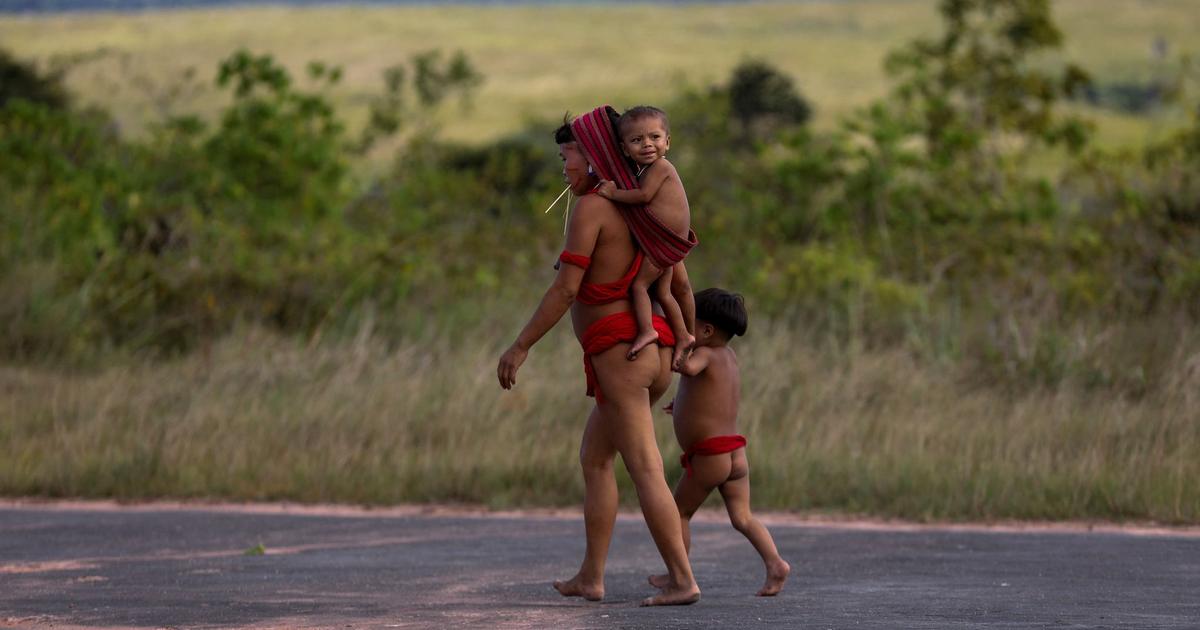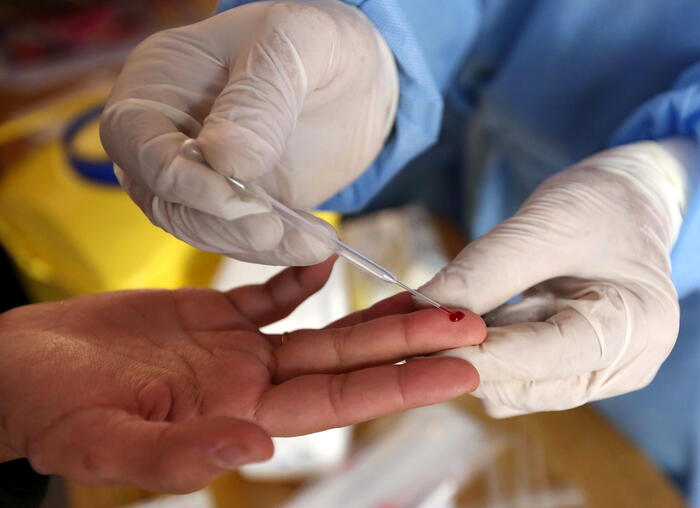The world changes continuously and with it, the ability of mosquitoes to adapt to environmental changes.
In harmony with the planet and its habitat, these insects innovate their molecular machinery and manage to resist some of the defense or protection tools used by humans, however innovative they may be.
This is what happens with the new insecticides that are approved against malaria.
The
Anopheles
family of mosquitoes
, vectors of this disease that kills about 400,000 people and can infect an adult up to 100 times each year, scoffs at insecticides and makes their population grow and strengthen.
The new compound, called clothianidin and accepted by the World Health Organization just two years ago, hasn't passed the test either.
A group of scientists from CRID (Center for Research for Infectious Diseases of Cameroon) concludes that it is no longer efficient to prevent the disease.
More information
Insecticides to control malaria lose up to 70% of their effectiveness
A world without AIDS, tuberculosis and malaria
Readings to a world scared of the man who defeated malaria
That this happens does not surprise the scientific community, as it is not the first time that has happened —60 countries already reported it to the World Health Organization (WHO) in 2010—.
Carlos Chaccour, researcher and medical specialist in the disease of malaria at the Barcelona Institute of Global Health and at the Institute of Tropical Health of the University of Navarra, explains that mosquitoes have been exposed to this chemical compound for a long time, since it is used in agriculture.
“The problem is that we are drinking from secondary sources.
Our insecticides come from outside, from agriculture, and we don't create our own molecule ”, he adds.
Clothianidin has a different mechanism than the other insecticides in use.
It is a slow-acting product and does not kill immediately, but its usefulness in public health is important.
The idea is to combine or rotate the compounds to achieve greater efficiency and that the mosquitoes do not get used to each one of them or to the mixtures.
"This insecticide does not replace any that already exists, but it is added to the arsenal", specifies Chaccour.
From the point of view of Elena Gómez Díaz, a researcher at the López Neyra Institute of Parasitology and Biomedicine (IPBLN-CSIC), it must be understood that all these actions against the vector or the parasite, from the use of insecticides to anti-malaria drugs, they introduce changes in the environment.
"And that may turn against us," warns the expert.
"Perhaps we are the ones who created this resistance," he concludes.
But what really happens in the natural environment?
How is this mosquito able to adapt?
Why does the parasite have so much plasticity?
He who innovates, wins
To answer all these questions and because these chemicals are not very friendly to the environment, Gómez Díaz carries out a project, recently funded by the La Caixa Foundation, that seeks to understand the molecular machinery of the parasite.
To this end, the collaborators of this project in Mali are going to begin a mission this October, during the time of greatest malaria transmission in the area: to obtain blood samples from children between 5 and 12 years old - the most vulnerable against malaria - and isolate parasites.
"What we will do next is infect mosquitoes and isolate their cells at different stages to identify the differences," he says.
There are two types of mosquito populations, heterogeneous and homogeneous.
Those who are, in short, used to living with changes of environment and those who are not.
"The former are the ones that will quickly overcome our tool because they are used to modifications," he explains.
As Chaccour says, "this is like a gun war."
He who innovates, wins.
But the biggest problem for him when it comes to malaria can be summed up in two very similar words: resistance and reluctance.
“You don't just have to look at insects.
Their resistance can also be caused by the reluctance of others to act and approve alternatives ”, he assumes.
Fredros Okumu, an expert in malaria eradication and Director of Science at the Ifakara Health Institute, also insists that it is essential to seek other solutions and link agriculture with global health.
“They have to be analyzed together.
It is very normal that insecticides intended for agriculture can later serve to prevent the transmission of infectious diseases, ”he says.
For him, it is possible to find alternatives such as home improvements, insecticide-free mosquito nets and that the use of these compounds is only temporary and, above all, judicious.
"I am convinced that we can find tools that are free of these products, durable and sustainable," he concludes.
Who transmits and who does not
Marta Moreno Leirana, a researcher at the Department of Infection Biology at the London School of Tropical Medicine and Hygiene (United Kingdom), believes that the best option is not so much to look for more insecticides, but to combine tools of different kinds and, above all, to adapt them to each context, since what happens in Africa has nothing to do with what happens in Latin America.
In one place, insects bite houses;
in other places, outside of them.
"But likewise, even if mosquito nets are put on the houses, they will know how to adapt and will begin to infect outside, wherever the human being is," the expert warns.
The greatest obstacle for her is the diagnosis of the disease and, therefore, she is in a project in The Gambia in which she analyzes the dynamics of malaria transmission, the reservoir of the parasite and its ineffectiveness in mosquitoes.
The study explores the effect that different interventions focused on the human
Plasmodium falciparum
reservoir have
in reducing malaria transmission, such as early detection of infection and treatment. "We also analyzed the blood of patients where the infection did not exceed three days and therefore it has not been enough to transmit the disease. We also take into account different areas where the prevalence and density of parasites in the blood varies ", Moreno details.
Another crucial point that the biologist investigates and that bears similarities to the current health crisis due to the new coronavirus is to find out who transmits, who does not and see how the patient's age influences.
These elements go hand in hand with the presence of asymptomatic patients, which cause problems and uncertainties.
For example, if the mosquito bites an asymptomatic person and then another person, how to trace the line of infections and prevent new ones?
And what treatment to give to asymptomatic patients to prevent this discontinuity?
In addition, although the main route of transmission of malaria is through an infected mosquito, it can also occur by blood transfusion or organ donation by someone who suffers from the disease.
"We need molecular tests for the diagnosis to be reliable and now we need to know how to treat asymptomatic patients and see what role they play in the chain," he concludes.
FUTURE PLANET can follow on
,
and
, and subscribe
here
to our 'newsletter'
.











/cloudfront-eu-central-1.images.arcpublishing.com/prisa/KMEYMJKESBAZBE4MRBAM4TGHIQ.jpg)


